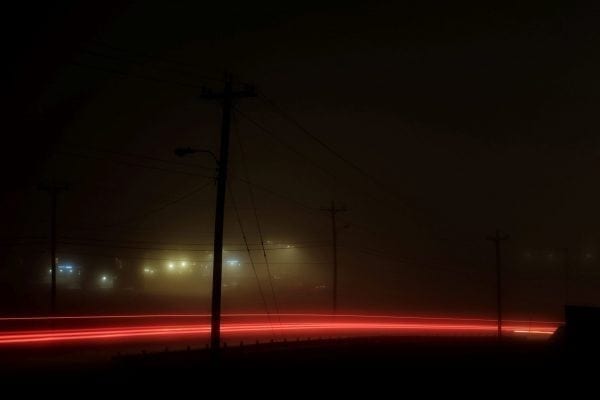Not since January 2014 has Iqaluit seen as lengthy a power outage as it did the evening of Aug. 11.

Iqalungmiut took to Facebook and Twitter, wondering what was going on when power wasn't restored as quickly as it normally is.
While many speculated the cause of the outage might be an overload on the system caused by the new airport terminal, Qulliq Energy Corp's (QEC) Sheila Papa explained the cause was a break in the main section of the air compressor system.
The outage was city-wide.
"The outage started at approximately 7:45 p.m., and power was restored to all customers at 11:15 p.m.," said Papa.
"QEC’s Iqaluit staff performed the required repairs to the compressor system. Additional staff returning from another community assisted with these repairs. Because of the delay with repairs to the air system, QEC reached out to Canadrill to assist with their compressor system."
Papa said the incident was unusual for QEC because required repairs had to be completed before power could be restored.
"Which resulted in a longer than normal outage," she said.
"While waiting for Canadrill’s compressor system, QEC crew was able to perform the required repairs to the compressor system."
The hospital, which went onto backup power, eventually lost that too.
"The Qikiqtani General Hospital, a site of Iqaluit Health Services, lost electrical power at 19:56 on Aug. 11. Power was provided through a stand-by generator system as per normal procedure. At 22:35, the generator system breaker tripped. Power was restored approximately 10 minutes after the failure," stated communications specialist for the Department of Health Ron Wassink.
"Iqaluit Health Services has a comprehensive emergency response plan. The plan is implemented during emergencies, such as the Aug. 11 power failure. There was no risk to patients. Health care staff continued to provide services using the appropriate emergency response plan in place."
Nunavut News/North asked QEC, as well as Community and Government Services (CGS), about contingency plans to keep Iqalungmiut warm should a lengthy power outage occur in frigid winter temperatures.
"Hamlet and city councils are required to establish an emergency response plan to address risks identified as most important to their community. These emergency response plans include evacuation locations for people at risk in an emergency situation such as a prolonged power outage," stated CGS's Rosemary Boyd.
"Emergency locations would be buildings that have an emergency power supply, capacity to provide rest areas, washrooms, and kitchens to provide food."
In January 2014 a severe winter storm gripped the city, bringing wind speeds of up to 150 km/h.
"Which caused multiple power outages. The first outage was recorded at 12:40 p.m. on the 7th, and power was restored to most parts of the city by 8 a.m. on January 8th," said Papa.
In 2014, Nunavut News/North reported that the lengthy outage caused communication mayhem. Internet connections were lost, cellphone and portable phone batteries drained and mobile service went down for a few hours. Anyone without a landline was left in silence.
The communication shutdown presented a problem for Nunavut's director of emergency management Ed Zebedee.
"We planned for emergency communication between the government and the communities. But we never really thought about internal, within a community, and the fact that so many people rely on cellphones these days versus landlines," said Zebedee at the time, adding they also struggled to communicate with residents in the capital city.
The department had started preparing warming shelters in schools in Iqaluit but couldn't get the word out. Only the shelter set up in Apex's Nanook School got used.
John Graham, who was the mayor of Iqaluit at that time, said the communication shutdown was just another reminder that residents must be ready to go without city services for 72 hours.
"The number one lesson is individuals have to be prepared. The other personal lesson I learned was I was quite impressed with the information coming out on Twitter," said Graham at the time. "It's a brilliant tool (for such an event)."
During the Aug. 11 outage, Government of Nunavut and City of Iqaluit social media were silent. QEC did post eight messages to Facebook, and some on Twitter.
"In the event of an emergency, QEC coordinates with the GN and the local hamlet/city to ensure timely communication with the public," said Papa.
The City of Iqaluit did not reply to questions about warming centres and communication protocol during such events.